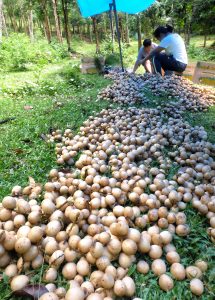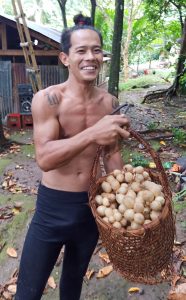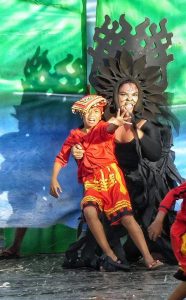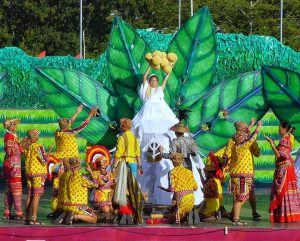
According to local folklore, a long, long time ago, a group of Manobos from the mainland sailed and settled in Camiguin after finding out that soil in the volcanic island yield excellent produce.

Then, one day, two Manobo boys went hunting in the forest. They followed a large hornbill, not knowing it was actually an evil creature named Tagbusaw, who snatched one of them and took him to the deeper part of the woods.
The other boy escaped and told the community about the incident. They immediately performed tribal rituals for the boy’s release, but to no avail. It only angered further Tagbusaw.

With no else to turn to, they sought the help of the “diwata”, who gave them a bunch of round, golden-colored fruits called “buahan” – the local name for “lanzones”. The “diwata” instructed them to offer the fruit to Tagbusaw, who later accepted it and released the child back safely to his family.
Ever since, the locals honored the “diwata” and the “buahan” by retelling the story generation after generation, and portray them during their festival that lures thousands of tourists each year.
During the “buahan” season, usually the last quarter of the year, one can see boxes and crates of the fruit sold in markets, in stalls near tourism sites around the island, and in makeshift stores outside houses along the highway.

“Almost all of us here have our own buahan trees in our backyards but one can also see vast farms in Mahinog, Sagay, Catarman and Mambajao,” said provincial tourism officer Candice Borromeo Dael.
To date, over 2,000 hectares of land are cultivated for lanzones in various sites in the above-mentioned municipalities.
According to Dael, as of October this year, they have “exported” 48,900 boxes of 20 kilogram per box of lanzones out of the island – or a total of 978 metric tons.

“That’s excluding the yield for local consumption,” she added.
While other provinces in the country also grow lanzones, Dael proudly said their lanzones tastes sweeter thanks to the island’s rich, volcanic soil.
In recent years, Camiguin has successfully crossbred their native variety with the imported Longkong. For branding purposes, each box of lanzones shifted out of the province proudly bears the “Camiguin Island” brand.

It may have started with a local folklore but the “buahan “of Camiguin continues to help fuel the local economy, both by tourism and trade, and the locals continue to show their gratitude with such blessing.


